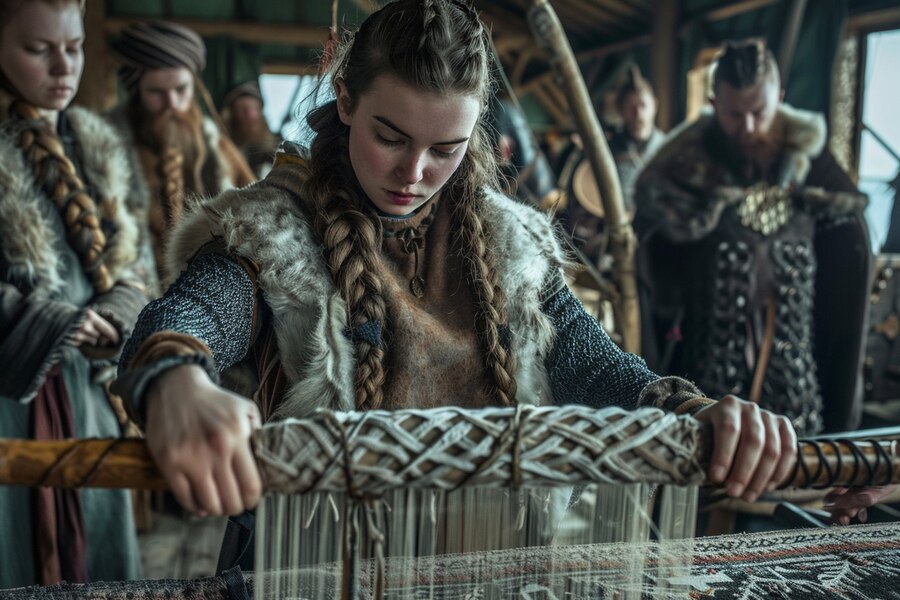The Elder Futhark and Its Role in Viking Culture

Strong8k brings an ultra-HD IPTV experience to your living room and your pocket.
The Elder Futhark is the oldest runic alphabet, consisting of 24 symbols used by Germanic tribes, including the Vikings, for communication, magical practices, and inscriptions. It dates back to the 2nd century CE and remained in use until approximately the 8th century, serving as a critical link to understanding early Norse and Viking traditions.
This runic system was not merely a writing tool; it held deep cultural, spiritual, and practical significance for the Viking Age people. From inscriptions on weapons and stones to its use in rituals and divination, the Elder Futhark reveals much about the beliefs, values, and daily life of these Norse ancestors. Below, we explore its origins, structure, and essential role in Viking culture.
Origins and Evolution of the Elder Futhark
The Elder Futhark emerged around the 2nd century CE, with its roots tracing back to earlier writing systems such as Old Italic alphabets used by the Etruscans and Romans. The name "Futhark" itself comes from the first six runes: Fehu, Uruz, Thurisaz, Ansuz, Raidho, and Kenaz. Each of these symbols carried phonetic value as well as a deeper symbolic meaning, reflecting concepts related to nature, life, and the divine.
While the Elder Futhark is often associated with the Vikings, its early use predates the Viking Age (approximately 793–1066 CE). The alphabet spread across Germanic tribes in Scandinavia, northern Europe, and even parts of modern-day Germany. Over time, as language and cultural needs evolved, the Elder Futhark gave way to more simplified runic systems like the Younger Futhark, which dominated the Viking Age.
Structure and Symbolism of the Elder Futhark
The Elder Futhark consists of 24 runes, divided into three groups known as aettir (meaning “eights”). Each aett was associated with specific deities or cosmic concepts, reinforcing the spiritual dimension of the runes. The runes were not arbitrary symbols; each had its own phonetic sound, name, and symbolic meaning, which often drew on natural forces, animals, or cultural ideas.
For example:
Fehu (ˈfæː.hu): Represented cattle or wealth, symbolizing prosperity and abundance.
Ansuz (ˈɑn.suz): Linked to the divine and communication, often associated with the god Odin.
Tiwaz (ˈti.wæz): Represented the warrior spirit, victory, and justice, connected to the god Tyr.
Each rune could be carved into wood, stone, or metal, making them versatile tools for both writing and spiritual practices. The layered meanings of these symbols highlight the interconnectedness of language, mythology, and daily life in Viking culture.
The Role of the Elder Futhark in Communication and Daily Life
The Elder Futhark served as the primary writing system for Germanic tribes, including early Vikings. Runes were carved into materials such as stone, wood, bone, and metal, creating inscriptions that documented everything from ownership and trade agreements to commemorative markers.
For instance, rune stones were common during the transition from the Elder Futhark to the Younger Futhark. These monumental stones often contained messages honoring the deceased, proclaiming achievements, or marking territorial boundaries. Despite their simplicity compared to Roman alphabets, the Elder Futhark runes allowed early Germanic peoples to preserve their thoughts, beliefs, and stories for future generations.
Practical use extended beyond monumental inscriptions. Personal belongings such as weapons, tools, and jewelry often bore runic engravings. Such items were not only decorative but also held protective or symbolic power for their owners.
Magical and Spiritual Significance of the Elder Futhark
Runes were not merely tools for communication; they carried profound magical and spiritual significance in Viking culture. The Elder Futhark was believed to hold divine power, and runes were often used in rituals, divination, and spellwork.
The practice of runecasting (divination using runes) involved carving the runes onto stones or wooden tiles and tossing them onto a cloth. The positions and patterns in which the runes fell were interpreted to gain insight into the future, solve problems, or communicate with the gods. This reflects the Vikings’ deep belief in fate (or wyrd) and the interconnectedness of human life with the divine.
Moreover, runes were used in protective charms, talismans, and amulets. For example, warriors might carve runes onto their weapons to ensure victory, while travelers might use them to invoke protection from harm. The power of the Elder Futhark lay in its connection to the gods, nature, and the unseen forces of the world.
The Transition from Elder Futhark to Younger Futhark
By the 8th century, the Elder Futhark began to evolve as linguistic and cultural changes spread through Scandinavia. The Younger Futhark emerged as the dominant runic system during the Viking Age, consisting of just 16 runes. This simplified system better suited the Old Norse language spoken by Vikings at the time.
Despite its decline in practical use, the Elder Futhark remained an essential part of Viking heritage. It served as a link to earlier Germanic traditions and continued to influence magical and spiritual practices. Today, its legacy lives on through archaeological discoveries, modern interpretations, and its enduring symbolism in Norse mythology.
Legacy and Modern Interest in the Elder Futhark
The Elder Futhark continues to fascinate historians, linguists, and enthusiasts of Norse culture. Its runes offer invaluable insights into early Germanic societies, their language, and their belief systems. Modern interest in runes often centers around their symbolic meanings, with people using the Elder Futhark for spiritual exploration, art, and personal expression.
In contemporary pagan and Norse-inspired practices, the Elder Futhark remains a central tool for divination and meditation. Each rune’s symbolism serves as a guide to understanding challenges, opportunities, and personal growth. Additionally, runes are increasingly found in popular culture, from literature and films to tattoos and jewelry, showcasing their timeless appeal.
Conclusion: The Enduring Importance of the Elder Futhark
The Elder Futhark was far more than an ancient alphabet; it was a vital part of early Germanic and Viking culture. Through its use in communication, rituals, and spiritual practices, it provided a bridge between the material and spiritual worlds. Today, its legacy endures as a symbol of cultural identity, mystical exploration, and historical insight.
By understanding the Elder Futhark and its role in Viking society, we gain a deeper appreciation of how these ancient people viewed their world—a world where language, magic, and nature were inseparable. Whether carved into a weapon or spoken in a ritual, the runes of the Elder Futhark continue to echo through time, offering their wisdom to those who seek it.
Note: IndiBlogHub features both user-submitted and editorial content. We do not verify third-party contributions. Read our Disclaimer and Privacy Policyfor details.







